Video: Exploring the Pallin glacier tunnel
Working with Stockholm University glaciologist Per Holmlund to identify sites of interest, Project Pressure recently travelled to the far north of Sweden to document glaciers in the Scandinavian Mountains, north of the Arctic Circle. During the expedition, which was supported by Polaroid Eyewear, photographer Klaus Thymann and Project Pressure 50% Director Christopher Seeley undertook an exploration of the Pallin Glacier tunnel, recently uncovered by melting ice.
Adventuring for science
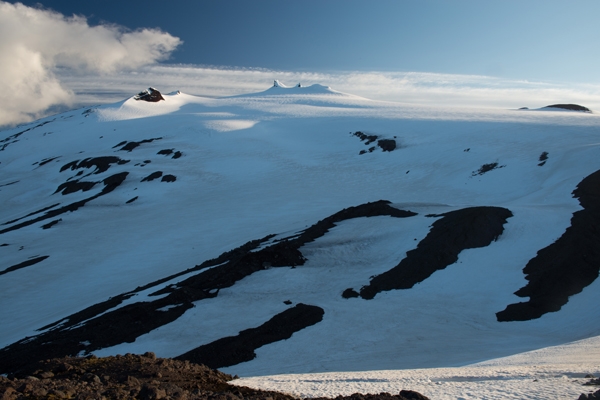
The first results of our collaboration with Adventurers and Scientists for Conservation are now in, with Carl Hancock capturing some superb images like these ones of Snæfellsjökull in Iceland, which Project Pressure originally visited in 2011. Thanks to Carl for taking the time and care to contribute these images and data, and to Gregg and Erin at ASC for setting this up. If you’d like to contribute to Project Pressure, please visit our Get Involved page.
read more…
Inside the Pallin tunnel
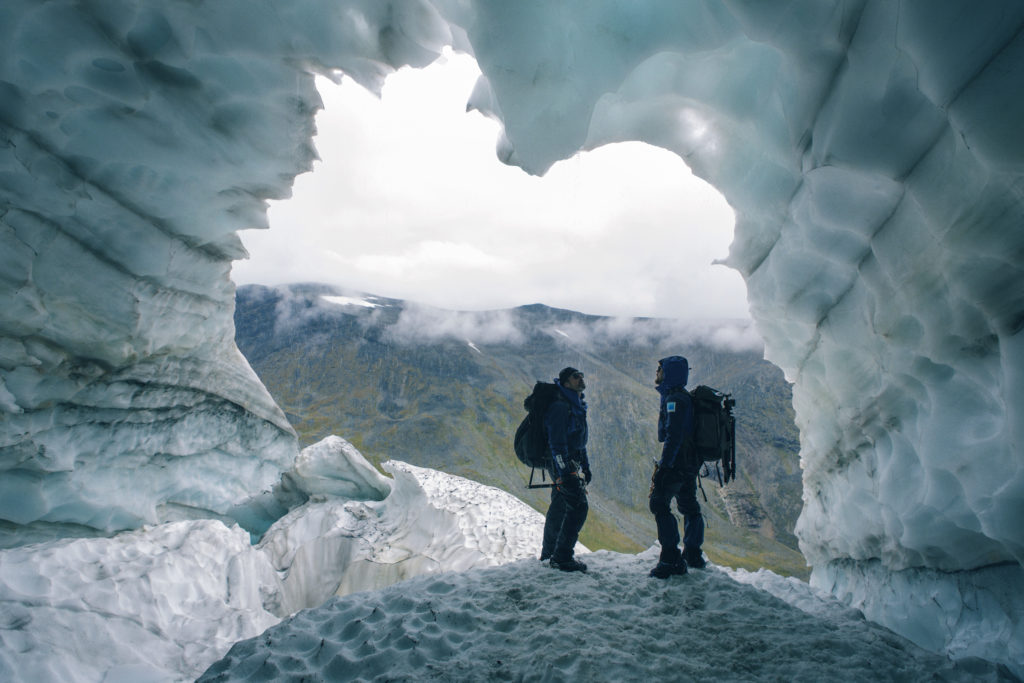
Project Pressure recently partnered with Polaroid Sunglasses to mount an expedition to Arctic Sweden. Among other sites, the team had an opportunity to explore the Pallin glacier tunnel. Uncovered by melting ice after being hidden for fifty years, this incredible natural wonder is one of the few glacial tunnels in the world that are safe to access.
A video about the tunnel with some background from glaciologist Per Holmlund is currently showing on The Guardian’s environment page.
Northern exposure
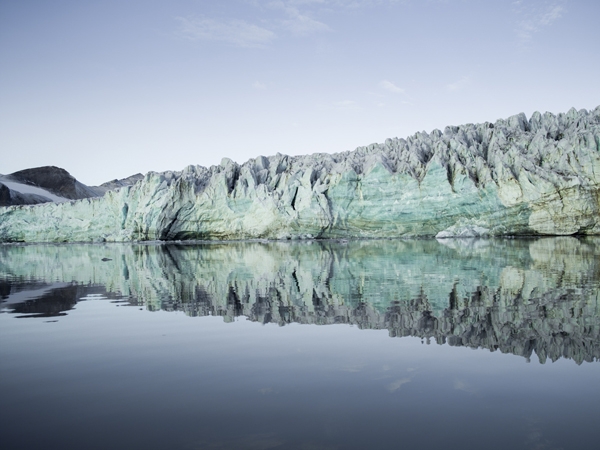
Renowned photographer and commercial fisherman Corey Arnold is currently documenting glaciers in Svalbard for Project Pressure, thanks to a grant from the Lighthouse Foundation. Beyond stunning shots of the ice, he’s also capturing a taste of what life is like for scientists living and working at the Polish research station in Hornsund. We’ll be posting more soon, or check out Instagram for a little preview.
Trading places
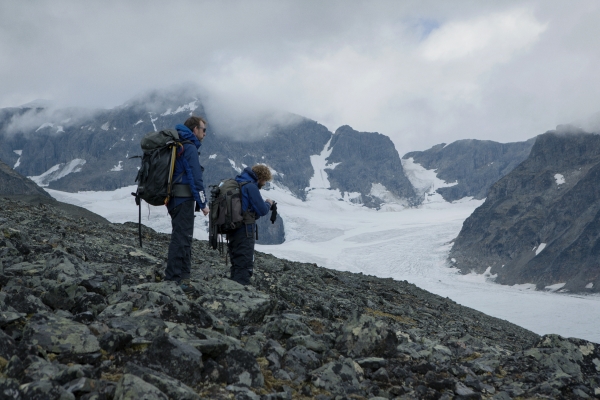
Project Pressure’s Chris Seeley and Klaus Thymann during a recent expedition to northern Sweden. It sounds impossible, but in the coming years, the country’s highest point is set to change…
Towering high above the surrounding peaks of the Scandinavian Mountains in northern Sweden, the peak of the Kebnekaise massif currently stands at 2100m – but it won’t be that way for long. Its ice-covered summit is slowly melting, and will shortly lose its place as the country’s highest point.
“One of the glaciers is currently the highest summit in Sweden, but it has changed over time,” explains glaciologist Per Holmlund, who Project Pressure caught up with en route to a recent expedition in the region. “During the last fifty years, the total mass has decreased significantly, so now it’s much more sensitive to warm summers.”
A glaciologist at the University of Stockholm, Holmlund has been studying the area for forty years – contributing to one of the longest-running glacier mass balance studies on earth. He and his team have produced a rich record of historical images and also the most up-to-date maps available, both of which Project Pressure used to plan the expedition.
Located inside the Arctic Circle, Kebnekaise has two peaks: the glaciated southern peak which currently stands as the nation’s highest point, and a rocky northern summit. The southern peak’s place in the record books was once a little more assured. Rising to 2125m feet in historical records, it easily beat its 2097m little brother to the title. Now, though, with changes to the glacier’s mass, the icy crown of Sweden is slowly sinking.
“In the beginning of the 20th century we believed that it was up to something like 2125m but then it started to decrease in elevation. By mid-century it was around 2120m and during the last forty years it has been undulating with a frequency of about ten years. Now, during the 21st century, it has dropped down another ten metres. It’s a very obvious decreasing trend.”
As Holmlund points out, the rock beneath the glacier only reaches up to 2060m, so if it becomes completely ice-free it will actually be demoted to the fourth highest peak in the country. Beyond just an interesting footnote for the record books, Sweden’s melting mountain stands as powerful symbol of the way the planet is changing.
“It’s very difficult to tell exactly when the change will occur,” concludes Holmlund, “but over the last ten years or so the decreasing trend has been in the order of a half metre per year. If we have some snow-rich winters and cold summers it will delay the changeover, but within ten years it’s likely to happen.”
Image: Project Pressure’s recent expedition to Sweden
Adventures in science
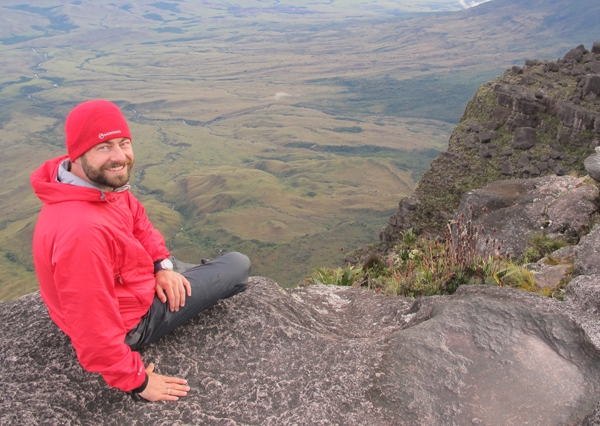
Project Pressure’s collaboration with Adventurers and Scientists for Conservation is continuing apace, with adventurer Carl Hancock visiting Snæfellsjökull and other glaciers in Iceland for us recently. Later this year, adventuring aid worker Ricky Munday will be travelling to South America to climb the three highest peaks on the continent and conduct some science along the way. We caught up with him to learn more…
Project Pressure: What are your expedition’s objectives?
Ricky Munday: This 38-day expedition is the latest leg in my long-term project to climb the 3 highest mountains on every continent – the Triple 7 Summits. This has never been completed. Along the way, we’ll be supporting ongoing scientific research on South America’s receding glaciers by collecting rock & ice samples for later analysis by world-class researchers, and creating a geo-tagged photographic record of glaciers for you guys. We’re also planning to raise a substantial sum of money to support cancer victims in the UK.
What kind of training are you doing?
I visited Scotland in April with one of the other team members to get some training in on the West Highland Way. We completed the 155km in 5 days, and were lucky to get fantastic weather – you can see some photos from that training here. We have just completed some training in Venezuela and in August we will climb Elbrus, the highest mountain in Europe (Russia – 5,642m). The range of climates and ecosystems that we will visit over the course of the next seven months are incredible; from the rain-soaked forests and ancient rock formations of the Guiana Shield; to the glaciated peaks of the Caucasus Mountains; and finally to the dry deserts of the Altiplano.
What has been your best previous experience in the mountains previously?
My best experience in the mountains is always my last – in this case spending two days on the summit plateau of Roraima in the Gran Sabana of Venezuela (pictured below). We trekked to the Proa in the Guyana sector but unfortunately, it was cloudy and there were no views. It was deeply disappointing after three hard days’ trekking. As we were trekking back to our cave camp, the local guide noticed the cloud cover shifting. For just a few minutes we were treated to an awesome site over the rainforests of Guyana. Breathing fresh mountain air in a remote mountain range; watching the sun rise or set at a high elevation where few people have been; witnessing a cloud inversion over a Scottish glen – these are the experiences that touch my soul.
Why you think its important to contribute to science?
I believe that we all have a responsibility to contribute to a better understanding of our planet. In my case, becaue I have the privilege of visiting places that many people can only dream of, I feel compelled to support researchers who would other wise have no access to samples or data from those remote areas. Although I am a Chartered Accountant, my background is science: I originally studied Zoology and dreamed of being a field researcher. My job now is focused on supporting the most vulnerable people, but my own passion is understanding and protecting our planet.
We’ll keep you posted on Ricky’s expedition, and you can sponsor him via JustGiving and contribute to Project Pressure here.
Postcard from Patagonia
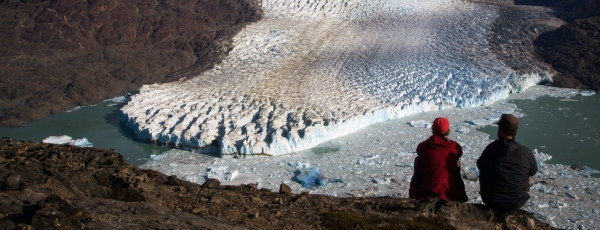
We were delighted to receive an email from Steve Behaeghel and his wife Katrijn, who have just completed an expedition to Patagonia which you can read about on their impressive blog.
While there, they took pictures for Project Pressure and collected samples for other initiatives through Adventurers and Scientists for Conservation – an NGO which links explorers and adventurers with initiatives like ours which can benefit from contributions by the public.
“We spent the last four months exploring remote corners of Patagonia,” writes Steve, whose image shows “the Glaciar O’Higgins, which calves in the huge Lago O’Higgins from the Southern Patagonian Ice Cap. This viewpoint is reached by a remote trek in the southern tip of the Aysen region, in Chilean Patagonia. Only a few determined people a year reach this remote rocky outcrop mirador per year.”
“The first night we scrambled up in very windy weather to find the 60m high (sticking out of the water) 3km wide glacier without any icebergs. After a stormy night, and now with windstill, sunny conditions, we hiked up again, to be astonished with the view that a huge shelf at least one mile long that had calved off during the night – forming a huge amount of ice and bergs in the lake.”
“We’re heading into the Cordillera Blanca and Huayhuash the upcoming seven weeks, with a lot of data collecting in the pipeline. Saludos from Huaraz, Peru.”
–Steve and Katrijn, Patagonian Dreams
Oxford Internet Institute blog
Following his Project Pressure talk, Klaus Thymann spoke to the Oxford Internet Institute’s David Sutcliffe about glaciers, data and crowdsourcing in detail. You can read more on the Institute’s Policy and Internet Blog.
Colombia & Bolivia expedition confirmed
Just confirmed our latest expedition – in June, Project Pressure will team up with Jorge Luis Ceballos of IDEAM to visit glaciers in the Sierra Nevada del Cocuy in Colombia, and then travel to Bolivia to document the Cordillera Real range.
Black Ice – mini feature
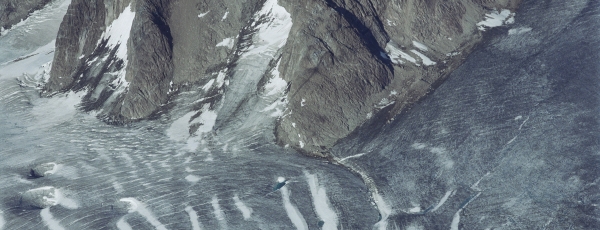
Project Pressure’s recent expedition to Eastern Greenland gave us an aerial view of one of the most insidious problems in the fight against climate change: darkening ice.
As a look through our photographic gallery reveals, glaciers are often naturally dirtied and darkened, especially during the summer months when no new snow accumulates– but over time, small manmade particles can also land and make them darker. The result is that less sunlight is reflected, more solar energy is absorbed and more melting takes place: a dangerous feedback loop that could become a key tipping point as the world warms.
The problem is especially pronounced in the Arctic and in the Himalayas, where a combination of emissions from transport, cooking stoves, wildfires, land clearance, coal power plants other sources drifts north over the ice and snow. Though tiny, these black carbon particles are collectively a serious problem – reducing the reflectivity (or ‘albedo’) of vast white surfaces and so causing significant melting.
The good news is that black carbon also presents a serious opportunity to reduce overall warming and improve people’s health. Firstly, it’s responsible for as much as 25% of observed global warming* – so tackling such emissions could bring serious results. Secondly, it doesn’t last long in the atmosphere (generally settling after just a few weeks) so the effects of a reduction would soon kick in. Thirdly, reducing these toxic pollutants would have huge benefits for human health, meaning it’s not just an environmental issue.
In the Western world, diesel emissions have been sharply reduced – benefitting both people and the planet. As shipping increases with the retreat of Arctic ice, limiting these dark emissions will remain a challenge – but one with serious potential to limit climate change.
Text by Chris Hatherill for Project Pressure
* J. Hansen, et al., Efficacy of Climate Forcing, 110 J. GEOPHYS. RES. D18104, 1 (2005), available at http://pubs.giss.nasa.gov/docs/2005/2005_Hansen_etal_2.pdf.
